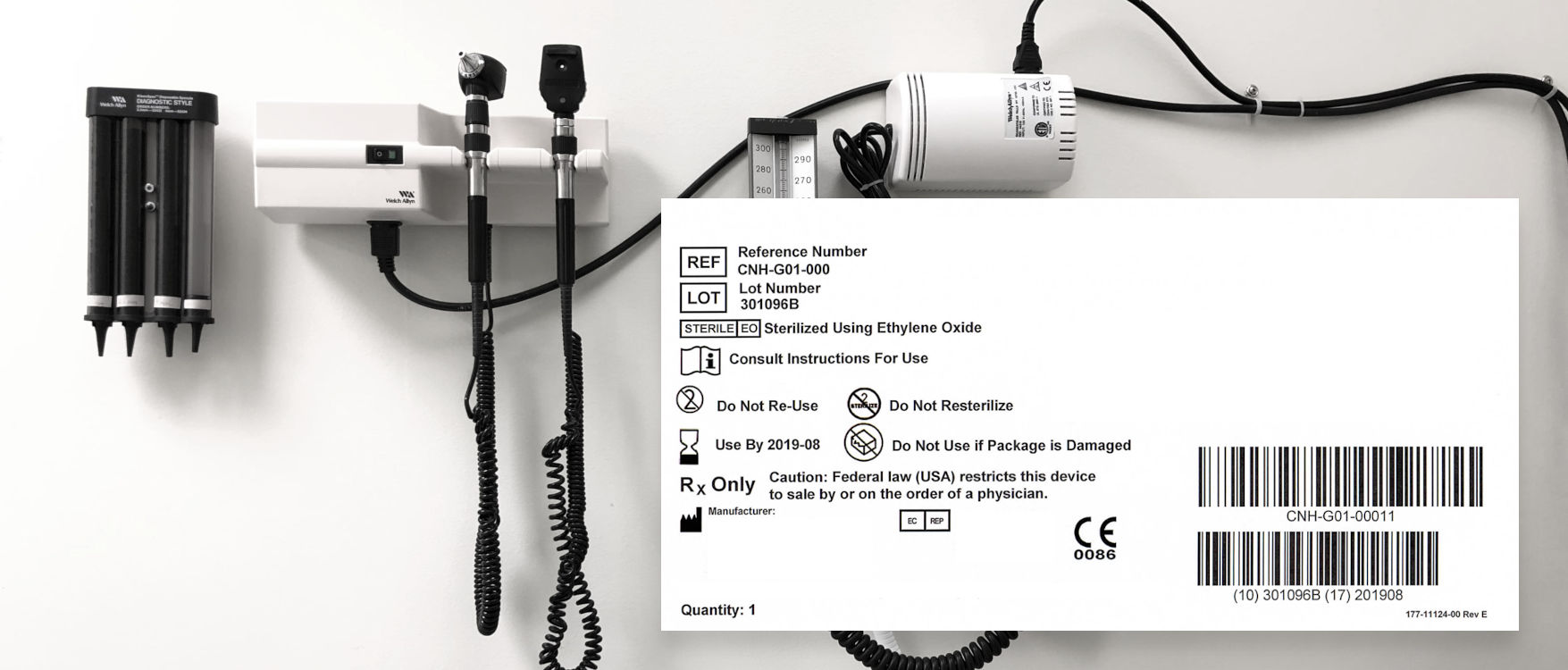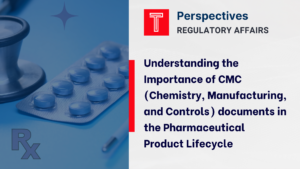Navigating Through EU MDR and IVDR Medical Device Labelling Requirements
The new European Union (EU) Medical Device Regulation (MDR) and In Vitro Diagnostic Regulation (IVDR) bring significant changes to the way medical devices are regulated in the EU. One of the most significant changes is the requirement for medical device manufacturers to make labeling changes to comply with the new regulations. In this blog, we will discuss all the labeling changes that must be made as per the new EU MDR and IVDR regulations, the new symbols that must be used, the timelines for implementation, the challenges faced by medical device manufacturers to implement these changes, and the best practices and methods recommended by industry experts.

Manufacturers are now required to provide more detailed and accurate information on device labeling, including the device’s intended use, instructions for use, and precautions for use. Additionally, the labeling must be provided in a clear and understandable manner for the user.
These changes have led to updates to the EN 1041 and ISO 15223-1 standards, which provide guidance on the information to be supplied by the manufacturer and the symbols to be used with medical device labels.
EN 1041 now mandates that the labeling of medical devices must be in the official language(s) of the country where the device is marketed, as well as in English. This is to ensure that users can understand the labeling regardless of their language proficiency, and aligns with the language requirements introduced by the EU MDR and IVDR.
ISO 15223-1 now includes requirements for ensuring that the labeling of medical devices is accessible to all users, including those with disabilities. This includes using clear and legible fonts, providing information in alternative formats such as braille or audio, and ensuring that color contrast is sufficient for users with visual impairments.
Contact us by submitting a business inquiry online. We will get back to you very soon.
Labeling Requirements by EU MDR and IVDR
The Medical Devices Regulation (MDR) (EU) 2017/745 sets out the requirements for the labeling of medical devices placed on the European Union market. The following are some of the key requirements for labeling medical devices under the MDR:
|
MDR Article |
Device Classification |
Labeling Requirements |
|
Article 10 |
All Classes |
Device identification (name, model, type, serial number), manufacturer information (name, registered trade name, address, contact information), UDI (Unique Device Identifier) in both machine-readable and human-readable format, intended use and any limitations or contraindications, symbols and markings compliant with ISO 15223-1, instructions for use (including warnings and precautions), language requirement (official language(s) of the country where the device is placed on the market), shelf-life and storage instructions (if applicable), clinical evaluation indication and reference to relevant documentation |
|
Article 17 |
Implantable Medical Devices |
Statement that the device is intended for implantation, specific warnings related to implantation |
|
Article 21 |
Devices Containing Human Blood Derivatives |
Statement that the device contains human blood derivatives, appropriate warnings, precautions, and contraindications related to human blood derivatives |
|
Article 22 |
Devices Incorporating Medicinal Products |
Statement that the device incorporates a medicinal product, appropriate warnings, precautions, and contraindications related to the medicinal product |
|
Article 23 |
Devices Containing Nanomaterials |
Statement that the device contains nanomaterials, appropriate information on the risks and benefits associated with the use of nanomaterials |
|
Article 27 |
Class III Medical Devices |
Information on the clinical investigation, clinical performance, and clinical evaluation of the device, identification of the notified body (if applicable) |
|
Article 29 |
Active Implantable Medical Devices |
Specific labeling requirements related to the programmable parameters of the device |
|
Article 31 |
In Vitro Diagnostic Medical Devices |
Appropriate labeling for the intended purpose and clinical use of the device, instructions for use, limitations of the device, performance characteristics, reference to the relevant common technical specification |
|
Annex XIII |
Class III and Active Implantable Medical Devices |
Specific labeling requirements related to the unique device identification (UDI) |
New Symbols Required by EU MDR and IVDR
The new EU MDR and IVDR introduce several new symbols that medical device manufacturers must use on their products to comply with the regulations. These symbols include:
| Symbol | Description |
|---|---|
| CE marking | Indicates that the device meets the requirements of the MDR |
| Unique Device Identification (UDI) | A system for identifying and tracing medical devices throughout their lifecycle |
| Lot number | Identifies the production lot from which the device came |
| Serial number | Identifies the individual device within the production lot |
| Batch code | A code that identifies the production batch |
| Catalogue number | The number used to identify the device in the manufacturer's catalogue |
| Date of manufacture | The date on which the device was manufactured |
| Manufacturer | The name or trade name of the manufacturer |
| Authorized representative in the EU | The name or trade name of the authorized representative in the EU |
| Do not reuse | Indicates that the device is intended for single-use only and should not be reused |
| Minimum temperature for use | The minimum temperature at which the device can be used safely |
| Maximum temperature for use | The maximum temperature at which the device can be used safely |
| Sterilized using irradiation | Indicates that the device has been sterilized using irradiation |
| Sterilized using ethylene oxide | Indicates that the device has been sterilized using ethylene oxide |
| Sterilized using steam | Indicates that the device has been sterilized using steam |
| Sterilized using dry heat | Indicates that the device has been sterilized using dry heat |
| Sterilized using moist heat | Indicates that the device has been sterilized using moist heat |
| Sterilized using gas plasma | Indicates that the device has been sterilized using gas plasma |
| Sterilized using aseptic processing | Indicates that the device has been sterilized using aseptic processing |
| Sterilized using other methods | Indicates that the device has been sterilized using other methods |
| Single-use device | Indicates that the device is intended for single-use only |
| Use by date | The date by which the device should be used |
| Caution, consult accompanying documents | Indicates that the device comes with accompanying documents that should be consulted |
| Protect from moisture | Indicates that the device should be protected from moisture |
| For in vitro diagnostic use only | Indicates that the device is intended for in vitro diagnostic use only |
| Do not use if package is damaged | Indicates that the device should not be used if the package is damaged |
| Medical device, do not reuse | Indicates that the device is a medical device intended for single-use only |
| Sterilization load number | A unique identifier for each load of devices that are sterilized together |
Timelines for Implementation
The timelines for the implementation of new symbols required by the European Medical Devices Regulation (MDR) (EU) 2017/745 and In Vitro Diagnostic Medical Devices Regulation (IVDR) (EU) 2017/746 vary depending on the article and classification of the medical device. Here’s a brief summary of the timelines:
|
Date |
Event |
|
May 25, 2017 |
MDR (EU) 2017/745 Regulation published |
|
May 26, 2020 |
MDR (EU) 2017/745 Regulation enforcement date |
|
May 26, 2022 |
IVDR (EU) 2017/746 Regulation enforcement date |
|
May 26, 2022 |
Implementation of Unique Device Identification (UDI) system |
|
May 26, 2022 |
Implementation of new symbols required by MDR (EU) 2017/745 |
|
May 26, 2024 |
Deadline for all medical devices to comply with MDR (EU) 2017/745 |
|
May 26, 2025 |
Deadline for all in vitro diagnostic medical devices to comply with IVDR (EU) 2017/746 |
|
May 26, 2025 |
Implementation of new symbols required by IVDR (EU) 2017/746 |
|
May 26, 2026 |
Deadline for all legacy devices to comply with MDR (EU) 2017/745 |
|
May 26, 2030 |
Deadline for all legacy in vitro diagnostic medical devices to comply with IVDR (EU) 2017/746 |
It’s important to note that these timelines are subject to change, and manufacturers should always refer to the latest guidance and regulatory updates to ensure compliance with the most up-to-date requirements. Additionally, the European Commission has indicated that it may develop additional symbols in the future to address emerging safety concerns or other issues, so manufacturers should stay informed of any developments in this area.
Challenges Faced by Manufacturers
Implementing the labeling changes as per the EU MDR and IVDR can pose challenges for medical device manufacturers. Some of the key challenges include:
> Time and resources: Updating labeling to comply with the new regulations can be time-consuming and resource-intensive, particularly for companies with a large number of products on the market.
> Increased complexity: The new regulations require more detailed and specific labeling information, including new symbols and UDI requirements. This can make labeling more complex, and can increase the risk of errors or inconsistencies.
> Translation requirements: The regulations require that labeling information be provided in all official languages of the EU countries where the product will be sold. This can be particularly challenging for manufacturers with a global market presence.
> Product redesign: In some cases, complying with the new labeling requirements may require changes to the product design or packaging.
> Lack of guidance: The EU MDR and IVDR regulations are complex and comprehensive, and there may be a lack of clear guidance from regulatory bodies on how to comply with the new labeling requirements.
> Impact on supply chain: Changes to labeling requirements may also affect the supply chain, as manufacturers may need to work with suppliers to ensure that labeling information is provided in the correct format and meets the new requirements.
Best Practices, Methods, and Labeling Change Implementation Strategies
Meeting labeling requirements Required by EU MDR and IVDR by MDR Articles according to the MDR (EU) 2017/745 Regulation can be challenging, but there are several best practices that can help you ensure compliance. Here are some of the best practices:
-
Stay up to date with the latest regulations and guidance: The MDR (EU) 2017/745 Regulation is a complex set of regulations, and it’s important to stay up to date with the latest updates and guidance. This will help you ensure that your labeling is in compliance with the latest requirements.
-
Develop a labeling strategy: Developing a labeling strategy can help you ensure that all of your labeling requirements are met. This should include a plan for how you will handle translations, symbols, and the UDI system. Perform a risk assessment to identify potential risks associated with the device’s labeling, such as incorrect or unclear information. The risk assessment must also include a plan to mitigate those risks.
-
Conduct a labeling assessment: Conducting a labeling assessment can help you identify any gaps in your labeling processes and ensure that all of your labeling requirements are being met. This can include an evaluation of your labeling processes, label content, label format, label placement, and translation.
-
Use a labeling software solution: Using a labeling software solution can help you ensure that all of your labeling requirements are met, including translations, symbols, and the UDI system. It can also help you streamline your labeling processes and reduce the risk of errors. The labeling content must be clear, concise, and easy to understand for the intended user. The labeling must also include the essential information for the device, such as its intended use, instructions for use, and precautions.
-
Partner with a labeling expert: Partnering with a labeling expert can help you ensure that your labeling requirements are met and that you stay up to date with the latest regulations and guidance. This can include consulting services, label design and development, and label translation services.
-
Test your labeling: Testing your labeling can help you ensure that it is clear, readable, and meets all of the regulatory requirements. This can include readability testing, validation testing, and verification testing.
Importantly, communicate the labeling change to all relevant stakeholders, including customers, distributors, and regulatory authorities. By following these best practices, you can ensure that your labeling is in compliance with the latest EU MDR and IVDR requirements and that you are able to meet the needs of your customers and stakeholders.
References:
-
- European Commission. Medical Devices. https://ec.europa.eu/growth/sectors/medical-devices_en
- European Parliament and Council. Regulation (EU) 2017/745 on medical devices. https://eur-lex.europa.eu/legal-content/EN/TXT/?uri=CELEX%3A32017R0745
- European Parliament and Council. Regulation (EU) 2017/746 on in vitro diagnostic medical devices. https://eur-lex.europa.eu/legal-content/EN/TXT/?uri=CELEX%3A32017R0746
- KPMG. “Labeling requirements for medical devices under the new EU MDR and IVDR.” https://advisory.kpmg.us/articles/2020/labeling-requirements-medical-devices-eu-mdr-ivdr.html






